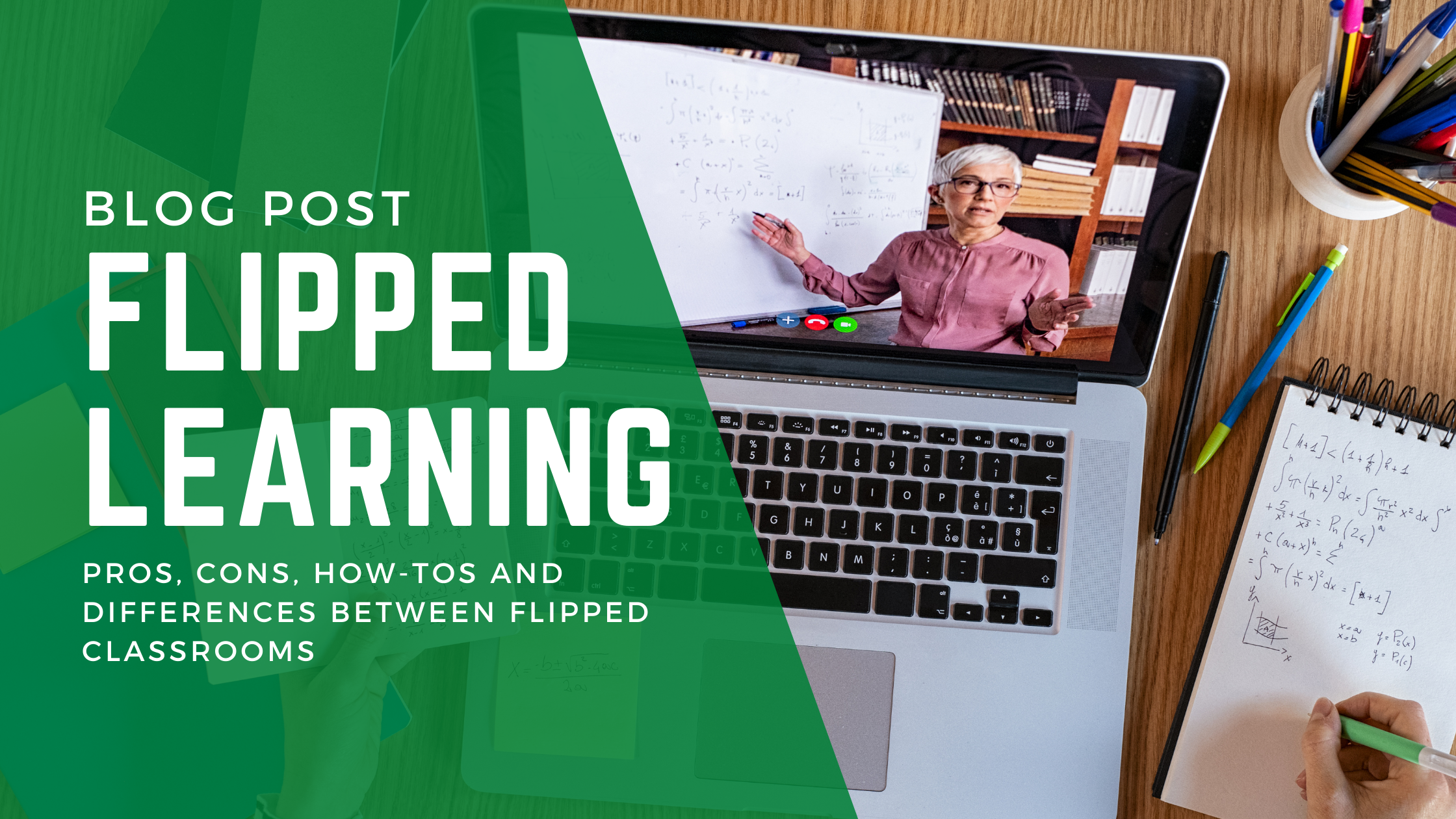We recently talked about flipped classrooms, which refers to changing the classroom setting from an instruction-based learning environment to one that’s discussion-based.
Today, we’ll be exploring flipped learning. Although the two sound similar, there are some key differences that you should know.
What is flipped learning?
Flipped learning is a shift in the learning experience that allows teachers to reach every student.
Flipped learning moves direct instruction from a group learning setting to an individual learning setting.
This makes the group learning space more dynamic and interactive as teachers are able to guide and engage students instead of just giving instructions.
How is flipped learning different from a flipped classroom?
While a flipped classroom does change the learning environment, flipping a class does not always lead to flipped learning.
In order to fully incorporate flipped learning, educators need to use the four pillars (F-L-I-P) and a checklist with 11 indicators that establish the flipped learning pedagogy.
But when you combine flipped learning and flipped classroom, you get the ultimate learner-centred experience.
Flipped learning: Checklist and indicators
F: Flexible environment
- Teachers establish places and time frames for students to interact and reflect on their learning
- Teachers observe, monitor, and adjust students' work as needed
- Teachers give students different ways to learn and express their understanding
L: Learning culture
- Teachers create opportunities for students to engage in meaningful activities that do not focus on the teacher
- Teachers make activities accessible to all students through differentiation and feedback
I: Intentional content
- Teachers evaluate content so students can have material to explore first on their own
- Teachers create or curate engaging value-add content (such as videos) for students
- Teachers use different methods of instruction to make content accessible and relevant to all students
P: Professional educator
- Teachers make themselves available to all students for individual, group, or class feedback in real-time when needed
- Teachers observe students during class and conduct ongoing assessments to inform future instruction
- Teachers collaborate and reflect with other educatorsFlipped learning: Checklist and indicators
Is flipped learning more effective than traditional lecture-based learning?
Reports by Brookings found that:
- Foundational knowledge is positively impacted by flipped learning
- Higher-order thinking has a modest positive impact from flipped learning
- Flipped learning helps students to learn professional and academic skills
- Intra- and interpersonal skills such as enhanced interpersonal skills, improved content engagement, and developed metacognitive abilities like time management and learning strategies are fostered by flipped learning
Which educational setting is most effective for flipped learning?
Although flipped learning is effective across most disciplines such as business and science modules, it produces the greatest academic, intra-, and interpersonal benefits when used in language, technology, and health science courses.
It can be extremely beneficial for skill-based courses as class time will be dedicated to practising and mastering skills, rather than simply teaching and instructing.
The takeaway
It sounds great and you’re ready to start, but changing your pedagogy can be difficult and time-consuming.
This is especially true for flipped learning because teachers will have to commit an abundance of time and effort in order to create the necessary digital content needed for flipped learning.
With the pandemic, many teachers have taken the leap of faith and found their own ways of teaching. Many of which have recorded lectures and created their own digital library for supplementary content.
Teachers with digital content can experiment with flipped learning to see how it works for students.
If you’re ready to convert your learning experience to flipped learning, you can learn how to design an effective flipped course using AI with Noodle Factory.
